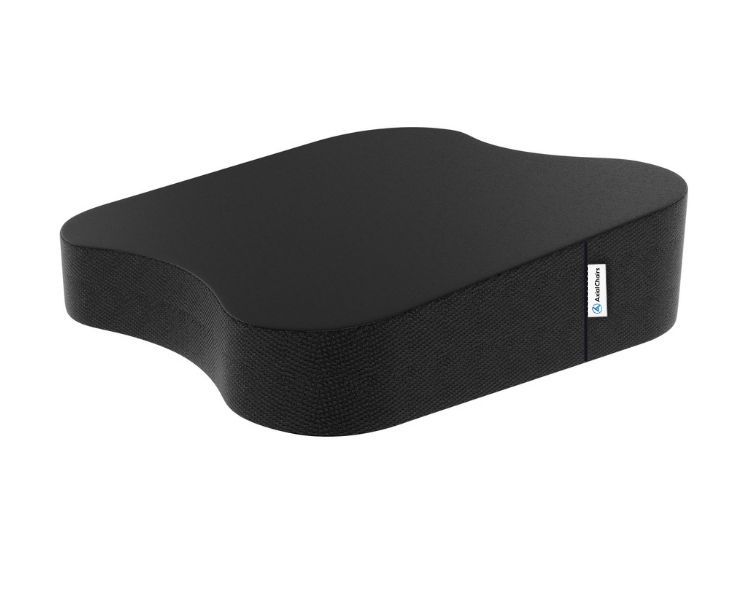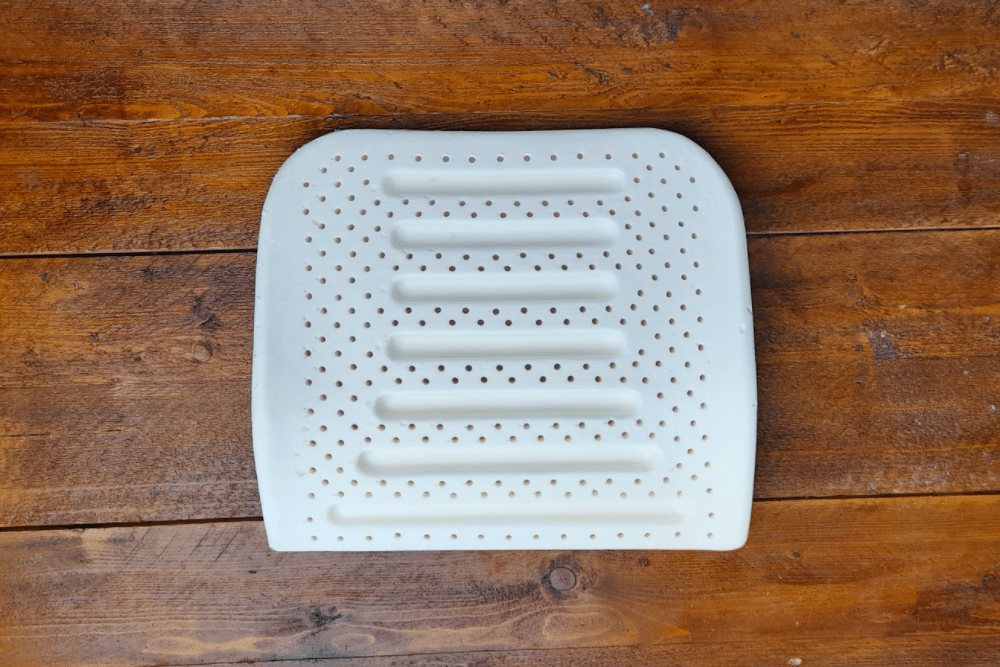If you’ve ever suffered from sciatica, you know how painful and disruptive it can be. Lower back pain is a common chronic problem for many of us – the strain of carrying our own body weight around day after day can take its toll with age. Women who are pregnant sometimes experience lower back pains due to additional strain on their spine. Fortunately, there are measures we can take to alleviate some of this discomfort over time as well as preventative steps that we should keep in mind when trying to maintain our spinal health — like wearing lumbar support belts or braces. In this article, we’ll discuss what sciatica is and whether lumbar support may help the condition by providing relief and minimizing future risks.
As a general rule, a lumbar support can be beneficial for sciatica as it helps to maintain proper alignment of the spine and reduce pressure on the nerves. Choosing the right lumbar support depends on individual needs and preferences, and consulting with a healthcare professional is recommended.
With over 30 years of practice, and training as an ergonomist and author on sitting, I’m well-equipped to provide valuable insights. My contributions to this field have been well-received, with TV appearances, my Youtube channel, and a successful Kickstarter campaign for my ergonomic seat cushions. If you’re searching for answers for your sciatic pain, I’m confident that I can offer meaningful guidance.
I’ve written a complete hands-on review about the best sitting position for sciatica, and here is what I tested best with my sciatica patients.
Get 35% off Orthopedic Seat Cushion Video Guide Video GuideSeat Cushion for Sciatica ComfortDoctor's Recommendation
Black Friday Offer!
Product DetailsResearch-based Design
Recommended ForBack Discomfort
Best Brace Support for Sciatic Nerve Pain
I know how you feel, struggling with sciatica pain and desperately searching for a solution. As a chiropractor, I’ve encountered many patients dealing with the same issue, and from my clinical experience, I’ve found that wearing a back brace can provide support and relief. It’s essential, though, to understand the importance of spinal alignment and a balanced, strong core as the central mechanism for sitting without causing back pain.
First, let’s talk about the right back brace for sciatica. While there are various options available, I’ve discovered that an expert-designed ergonomic seat cushion made with a natural latex top and a high-density base layer foam can significantly enhance comfort and support. I strongly advise against memory foam as it lacks pressure support, resilience, and can be a toxic material that heats up during extended periods of sitting.
Now, when it comes to wearing a back brace for sciatica, the proper fit is crucial. Here’s a step-by-step guide on how to wear one:
- Begin by loosening the straps on the brace, making it easier to put on and adjust.
- Position the brace around your lower back, ensuring it covers the affected area. The brace should sit just above your hips and provide support to your lumbar region.
- Tighten the straps until you feel a gentle compression on your lower back. The brace should feel snug but not uncomfortably tight. It’s essential to maintain your natural spinal alignment, so avoid over-tightening the brace, as this can lead to further issues.
- Take a moment to check your posture while sitting or standing, making sure you’re maintaining a neutral spine position. The brace should help you maintain proper posture, alleviating pressure on the sciatic nerve.
- Finally, give yourself time to adjust to the brace. Wear it for short periods initially, gradually increasing the duration as you become more comfortable.
Remember, a back brace is not a permanent solution for sciatica pain, but it can provide relief and support as you work on strengthening your core and improving your posture. As a caring chiropractor, I always recommend discussing any concerns or questions with a healthcare professional, as individual circumstances may vary. Stay persistent and take care of your body, and you’ll be on the road to a pain-free life!
All Day Comfort & Support
Will a Knee Brace Help With Low Back and Sciatica Pain?
I know how you feel when it comes to dealing with low back and sciatica pain – it can be frustrating and overwhelming at times. As a chiropractor, I’ve seen my fair share of patients with these complaints, and I’ve gathered quite a bit of clinical experience on what works and what doesn’t.
In some cases, a knee brace can provide temporary relief for low back and sciatica pain. However, it’s important to understand that it’s not a one-size-fits-all solution. A knee brace primarily focuses on stabilizing the knee joint, and while it may indirectly alleviate some of the strain on the lower back, it doesn’t address the root cause of the problem.
From my experience, the central mechanism for sitting without causing back pain lies in maintaining proper spinal alignment and a balanced, strong core. These factors are crucial in supporting your entire body and ensuring optimal weight distribution.
One way to promote a healthy sitting posture is by using an expert-designed ergonomic seat cushion. I always advise my patients to choose a cushion made with a natural latex top and a high-density base layer foam. This combination provides the necessary support and comfort for your spine and pelvis, helping you maintain a neutral position and avoid unnecessary strain on your back.
I never recommend memory foam cushions, as I believe they lack the pressure support and resilience needed for long-term comfort. Additionally, memory foam may be a toxic material that tends to get hot when you sit on it for extended periods, which can lead to discomfort and further aggravate your back pain.
While a knee brace may provide some temporary relief, it’s essential to focus on the bigger picture by addressing spinal alignment and strengthening your core. By doing so, you’ll be better equipped to manage and potentially alleviate your low back and sciatica pain. Remember, it’s always a good idea to consult with a healthcare professional, like a chiropractor, to ensure you’re taking the appropriate steps towards a pain-free life.
Black Friday: 35% Off Today
Typical Delivery 1-3 Days
My Shocking Discovery of a Sciatica Back Support
Dealing with sciatica can be a real challenge, especially when it comes to finding the right kind of support while sitting. As a chiropractor, I’ve seen firsthand how important it is to have proper spinal alignment and a balanced, strong core to alleviate the discomfort that often comes with this condition. Based on my clinical experience, I’ve found that the key to sitting without causing additional back pain for those with sciatica lies in using the right kind of support.
In my practice, I always advise my patients to use an expert-designed ergonomic seat cushion to help provide the necessary support for their spine and core. These cushions are specifically designed to promote proper spinal alignment while sitting, reducing pressure on the sciatic nerve and offering relief from pain.
One particular type of seat cushion I highly recommend is made with a natural latex top and a high-density base layer foam. The combination of these materials offers excellent support and resilience, allowing your spine to maintain its natural curve and alleviating any undue stress on your lower back and sciatic nerve. Additionally, this type of cushion is more breathable than memory foam, ensuring that you stay cool and comfortable even when sitting for long periods.
I explain the concept of my ergonomic design on a TV show HERE
Seat Cushion for Sciatica ComfortAxial Ergonomic Seat Cushion® | Seat Chair Wedge
Quick Guide: A 30-Second Summary

All Day Comfort & Support
Product Name
Axial Designs™ Seat Cushion
Price
$149
Warranty
1 Year
Type
Posture Wedge
Top Layer
100% Natural Latex (Molded)
Bottom Layer
High-Density Foam
Top Material
Isometric Grippy Vegan Leather
Bottom Material
Non-Slip Material
Side Material
3D Breathable Fabric
Speaking of memory foam, I never recommend using it as a seat cushion for those with sciatica. From my perspective, memory foam lacks the pressure support and resilience needed to properly support the spine and core. Furthermore, memory foam is a toxic material that tends to get hot when you sit on it for extended periods, making it less than ideal for anyone seeking comfort and relief from sciatica pain.
I truly care about your well-being and comfort, especially when dealing with conditions like sciatica. Investing in a high-quality, ergonomic seat cushion made from natural latex and high-density foam can make a world of difference in your daily comfort and, ultimately, your overall spinal health. Remember, a suA central mechanism for sitting comfortably without causing back pain is to ensure that your entire body is supported, not just your lower back. This is where an expert-designed ergonomic seat cushion comes in. I always advise my patients to opt for a cushion made with a natural latex top and a high-density base layer foam. These materials work in tandem to provide optimal support and pressure relief for your spine and hips, ultimately promoting better posture and alleviating discomfort.
On the other hand, I never recommend memory foam, as I believe that it lacks pressure support and resilience. Furthermore, it’s occasionally a toxic material that tends to get hot when you sit on it for extended periods, which is not ideal for your comfort or overall well-being.
Incorporating spinal alignment and core strength exercises into your daily routine can also help immensely in preventing and managing back pain. Engaging in activities such as yoga, Pilates, or even simple stretches can make a world of difference in improving your posture and core stability.
To sum up, while lower back (sciatica) belt boots might provide temporary relief, the key to long-term comfort and pain management lies in proper spinal alignment, a strong core, and a well-designed seat cushion. By focusing on these aspects, you’ll not only find sitting more enjoyable but also pave the way towards better overall spinal health. Remember, as a chiropractor, my main goal is to help you achieve a pain-free, comfortable life – and I’m always here to support you in your journey.
All Day Comfort & Support
How to Wear a Back Braces for Sciatica: Spinal Alignment and Core Support
Here’s what I’ve found out from my clinical experience: wearing a back brace for sciatica can be extremely helpful when used correctly. The key to using a back brace effectively is to focus on spinal alignment and building a balanced and strong core.
When choosing a back brace, it’s crucial to find one that offers both lumbar support and encourages proper posture. As a chiropractor, I’ve seen countless patients who’ve experienced relief from sciatica symptoms by utilizing a back brace that promotes spinal alignment. When your spine is correctly aligned, it alleviates pressure on the sciatic nerve, reducing pain and discomfort.
Now, let’s talk about core strength. A balanced and strong core is essential for maintaining good posture and supporting the spine. Wearing a back brace can be a great reminder to engage your core muscles throughout the day. In my practice, I’ve witnessed patients become more aware of their posture and core engagement when they wear a back brace, leading to long-term improvements in their spinal health.
To maximize the benefits of your back brace, I always recommend incorporating a proper sitting arrangement. An expert-designed ergonomic seat cushion can work wonders to maintain spinal alignment and relieve pressure on your lower back. Look for a cushion with a natural latex top and a high-density base layer foam to ensure the perfect balance of support and comfort.
I must emphasize that I never recommend memory foam cushions. In my experience, memory foam lacks the pressure support and resilience required to maintain good posture over extended periods. Moreover, memory foam can be a toxic material, often getting uncomfortably warm when you sit on it for long durations.
In summary, wearing a back brace for sciatica should focus on spinal alignment and core support. Make sure to select a brace that encourages proper posture and combines it with a high-quality ergonomic seat cushion. By following these guidelines, you’ll be taking essential steps toward relieving your sciatica pain and improving your overall spinal health.
Black Friday: 35% Off Today
Typical Delivery 1-3 Days
Sciatica Belt Boots
Here’s what I found out from my clinical experience: spinal alignment and a balanced, strong core are the central mechanisms for sitting without causing back pain. One surprising solution I came across is Sciatica Belt Boots.
Now, you might be wondering, “What do boots have to do with sitting and back pain?” Well, let me explain. Sciatica Belt Boots are designed to provide optimal support to your lower back, pelvis, and legs, promoting proper spinal alignment while sitting. By taking the pressure off your sciatic nerve and lumbar region, these boots can help alleviate discomfort and ensure a more comfortable sitting experience.
Also, I always advise my patients to use an expert-designed ergonomic seat cushion made with a natural latex top and a high-density base layer foam. This combination offers the perfect balance of comfort and support, allowing your spine to maintain its natural curve and your core muscles to remain engaged, promoting a strong and stable posture.
Conclusion
Sciatica is a debilitating condition, and it can have a deep impact on your daily life. With the right lumbar support, though, you can find some relief from this pain. It’s important to find an option that works for you and your lifestyle. Whether it’s an adjustable lumbar support cushion or firm mattress that gives your back the perfect amount of support, there are lots of options to choose from.
Talk to your doctor or physical therapist to find out what kind of lumbar support is best for you. Don’t let your sciatica get in the way of your life―with good posture, adequate exercise and proper spinal support, you can be sure that you will feel better soon and start enjoying activities again. As always, caring for yourself should be your priority; get the help you need if it becomes too much to bear.





